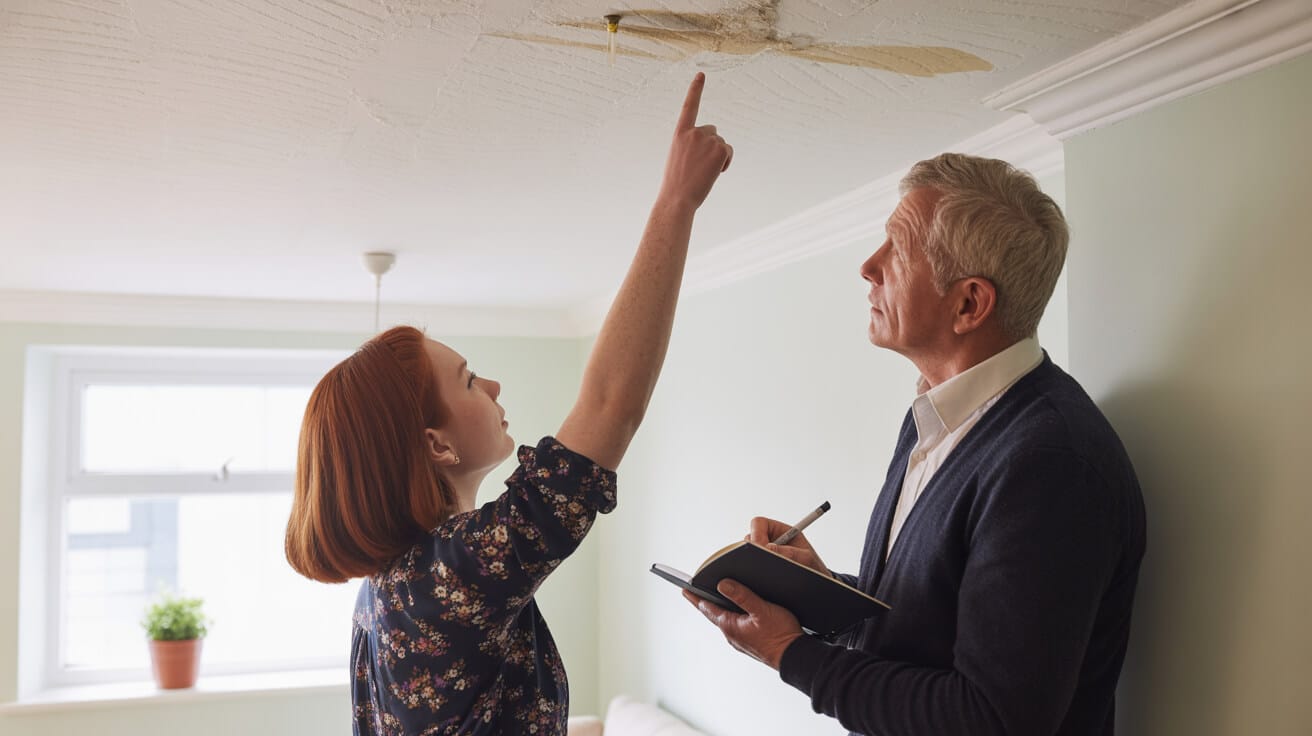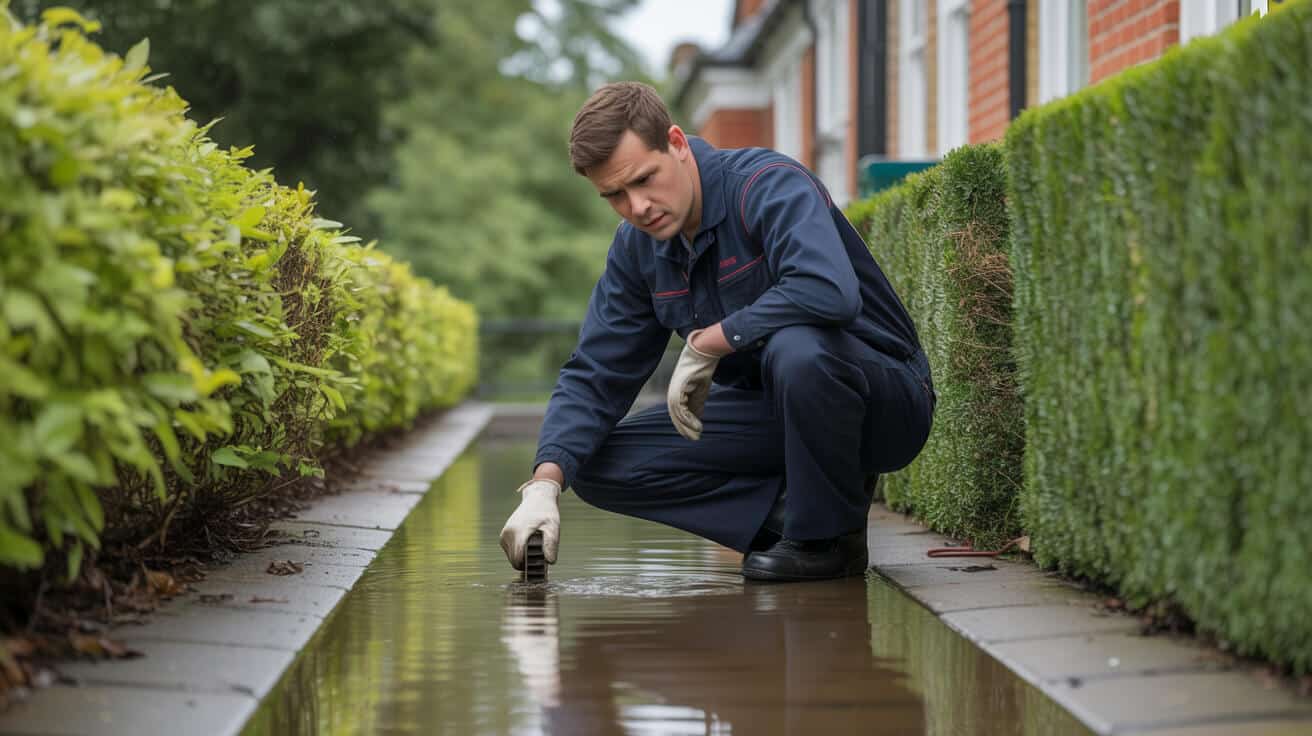 How Your Home’s Plumbing System Works – A Beginner’s Guide
How Your Home’s Plumbing System Works – A Beginner’s Guide
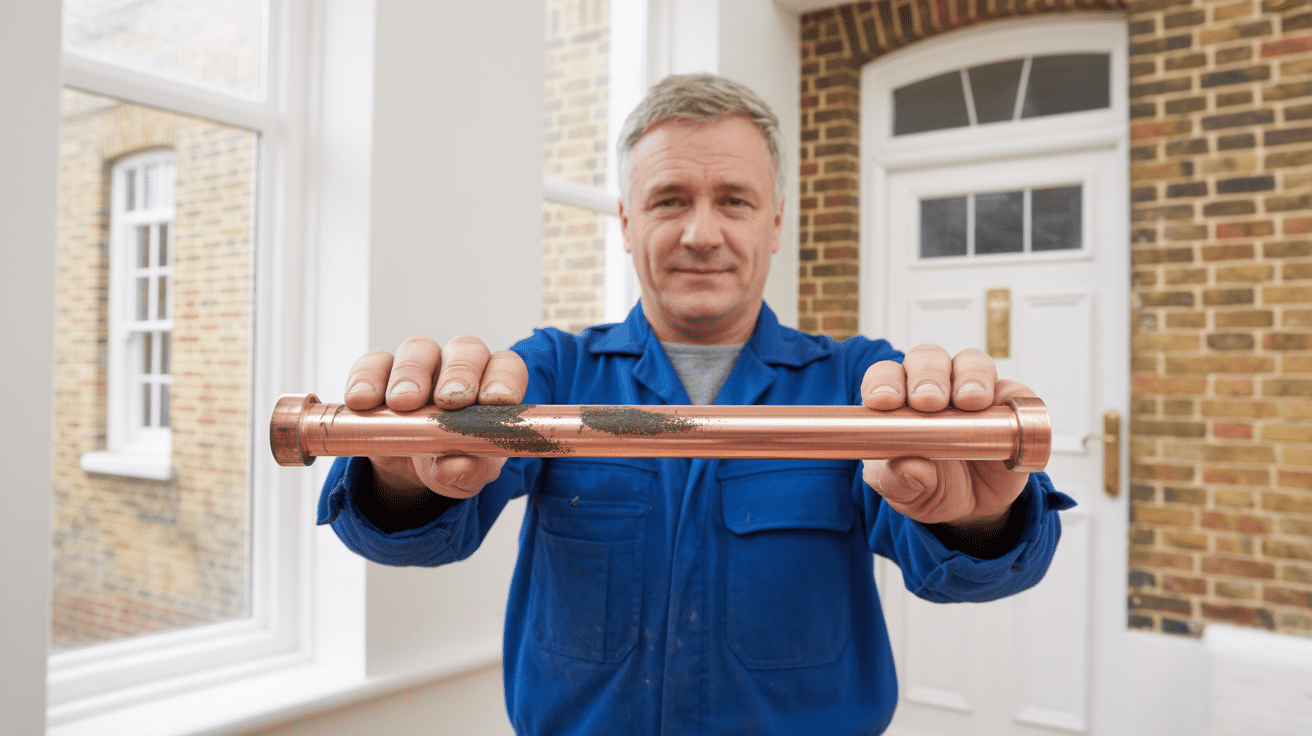
How Does Your Home’s Plumbing System Actually Work—And Why Should You Care?
Most property owners don’t look twice at a pipe until water’s running where it shouldn’t. Yet, underneath every home, flat, and business, your plumbing quietly holds together comfort, compliance, and cost control. If you’re a homeowner, landlord, estate or letting agent—or run property for local authorities or a business—knowing the real workings of your plumbing isn’t just “practical”. It’s what protects you when the bills, claims, or tenant anxieties hit.
A robust plumbing system is silent by design. But that silence comes from order—not luck. Pipes, valves, tanks, and safety features are either quietly protecting you or quietly coming undone, every single year. Understanding what’s behind every tap and flush arms you with choices before a crisis hits. Whether you’re planning a let, prepping for a sale, or just want a system your insurer won’t penalise, it’s hands-on plumbing literacy that buys you peace of mind and legal protection.
Five minutes spent understanding your plumbing is worth more than five hours cleaning up a preventable leak.
This isn’t guesswork or plumber-speak: with the basics at your fingertips, you catch what others miss, ask better questions, and prevent common problems from draining your time, your bank account, or your reputation.
What Are the Layers of a Plumbing System—And How Do They Impact Comfort, Risk, and Compliance?

It’s not just water in, water out. Plumbing is layered, with each level solving a different risk—whether that’s leak protection, safety in emergencies, or regulatory demands that have changed quietly in the background. A system that’s properly mapped and labelled doesn’t just run smoother; it unlocks faster callouts, safer tenants, and a more valuable property.
Main Entry—The Real Start of Your System
Every journey begins at the property boundary, where MDPE (modern blue plastic) pipes usually bring mains water from the street. In some older UK homes, you may still find legacy lead pipes—these need replacing for health (and legal) reasons (Drinking Water Inspectorate, 2024). The internal stopcock, often hiding under the sink or by the entrance, is your “all off” switch. If you don’t know where it lives—or it won’t move—you don’t have control in a crisis.
The Web of Distribution and Isolation
From here, copper or plastic pipework runs under floors, behind walls, up to every tap, WC, or appliance. At each connection, you’ll often spot small isolation valves. They let you fix or swap a faulty part without draining the whole system. In flats or rented units, this is the difference between a thirty-minute callout and emergency chaos.
Safety and Compliance Features that “Keep You Out of Trouble”
Pressure reducing valves, expansion vessels (especially on modern unvented cylinders), and backflow prevention devices (like non-return valves) are all quietly working to meet British Standards (WRAS, WaterSafe, and G3) and shield you from flood or contamination. These are the guts of a system that’s not just functional, but fit for even the fussiest insurer or letting agent (WRAS Direct, 2024).
You only notice the plumbing once—right after it’s failed. Knowing your layers means you find problems before they find you.
The upshot: mapped, labelled, and well-documented plumbing doesn’t just make life easier at repair time. It distinguishes modern ‘audit-proof’ properties from those destined for repeat issues, lost tenancies, or costly disputes.
How Do Pipe Materials and Their Routes Influence Longevity, Repair Speed, and Value?

Pipes are not all created equal, and neither is the way they’re routed through your property. The difference between a morning fix and a week-long repair often comes down to the material and layout lurking beneath the paintwork. Outdated or poorly planned pipes quietly rack up risk and cost, often limiting upgrade options or invalidating insurance.
The Real Material Line-Up in UK Homes
- MDPE (blue plastic): The modern “go-to” for mains—flexible, frost-resilient, driver for tight connections with fewer leaks.
- Copper: Still top in most internal routes—quiet, reliable, and easily clipped to avoid movement and noise. Properly supported copper is a selling point.
- Plastic (PEX, PB): Winning ground for speed and no-heat instals, especially in new builds or tricky retrofits. Great if the fittings are checked, but a cause of “push-fit” anxiety if installed sloppily.
- Lead: Still lurking in many pre-1970s homes. Health hazard, sale-blocker, and legally flagged—treat as a “must replace” if discovered.
Why Route and Label Matters
Neat, visible pipework isn’t just tidy—it means less time diagnosing leaks, fewer guesswork callouts, and easier upgrades (say, to smart heating). Badly-run pipes, concealed behind walls or below floors with no records, are the silent villain behind spiralling repair times and ruined insurance claims (This Old House, 2024).
Easy Mapping for Anyone
Anyone with a phone can give future-you (or the next agent or engineer) a big leg up:
- Photograph every main entry, stopcock, valve cluster, and appliance connection.
- Label what you see—plain stickers beat specialist tools.
- Keep a digital log (Dropbox, Google Drive, or even landlord portals).
A two-minute record now makes every future fix half as expensive—and half as stressful.
Those who document and map don’t just recover faster; they become the legends among tenants, insurers, and repair teams.
Why Are Stopcocks and Isolation Valves Your Most Powerful Shield?

Too many property owners find out the hard way: when water’s pouring across a floor, locating and operating the stopcock is a race against time. It’s the cheapest part of your system—and the most powerful in an emergency.
Your Battle-Tested Valve Routine
- Main Stopcock: This is “all or nothing.” It should rotate easily—stuck, seized, or leaking means instant escalation.
- Local Isolation: Under every basin, behind every WC, at every washing machine. If an individual fixture fails, you shut off there, not the whole house or building. This is what separates pros from amateurs.
- Maintenance: Once per season, check for movement. Encourage tenants, caretakers, or even guests to know where at least one isolation point is located.
Corroded, scaled, or “mystery” valves are a warning sign to insurers and letting agents—it’s the starting point for property handover checklists in best-run portfolios.
Being shown the valves at handover by your plumber is not just good service—it’s become a legal expectation in many managed blocks or regulated homes.
What Are the Earliest, Easiest Signs of Plumbing Trouble—And How Fast Should You Act?
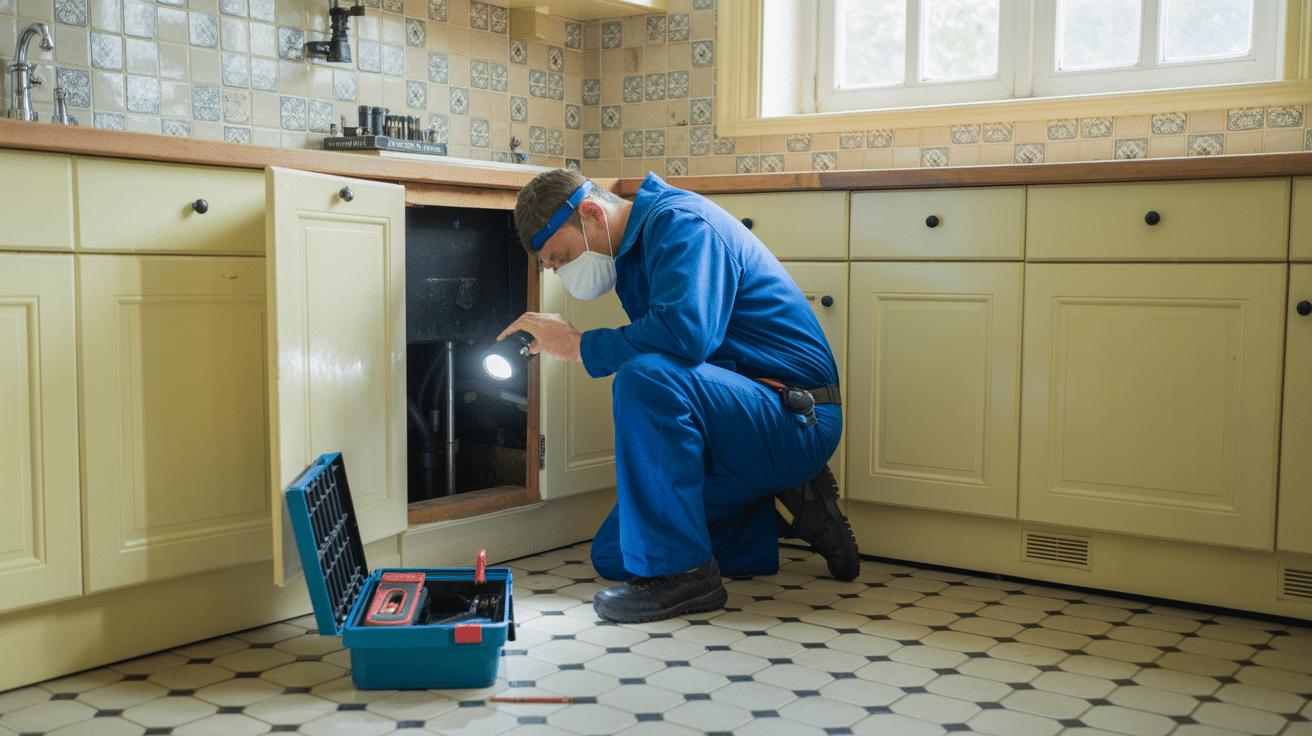
Plumbing rarely fails out of the blue. Micro-problems whisper before they scream, and the systems that catch these signals cost far less to run or insure.
Spot Trouble Before It Escalates
- Stains on ceilings, walls, or near pipe runs: Almost always the first stage of a leak—long before water pours.
- Sudden drop in water pressure: A pressure loss at several outlets hints at a system-wide problem, while a single fixture points to a local issue.
- Water bill spike: Unseen leaks can double running costs—your metre is often your best early-warning device.
- Damp, musty odour or discolouration under sinks and baths: Hidden drips silently rot woodwork or foster mould.
- Discoloured water at first draw: Can signal tank, pipe, or mains issues—especially in gravity-fed (indirect) systems.
- Noises—banging (water hammer), pipe shudder, or bubbling at odd times: Either poor mounting, air in the system, or failing valves.
Letting agents and landlords increasingly log regular “walk-arounds” with photographs—insurers and compliance auditors have caught up, and so should you (TrustMark, 2024).
Catch the whisper, spare the shout—the best systems never reach crisis because someone listened early.
Logging, acting, and sharing records is the habit that sets well-run properties apart.
Which Parts Fail First—And What Best Practices Shield Against Repeat Callouts?
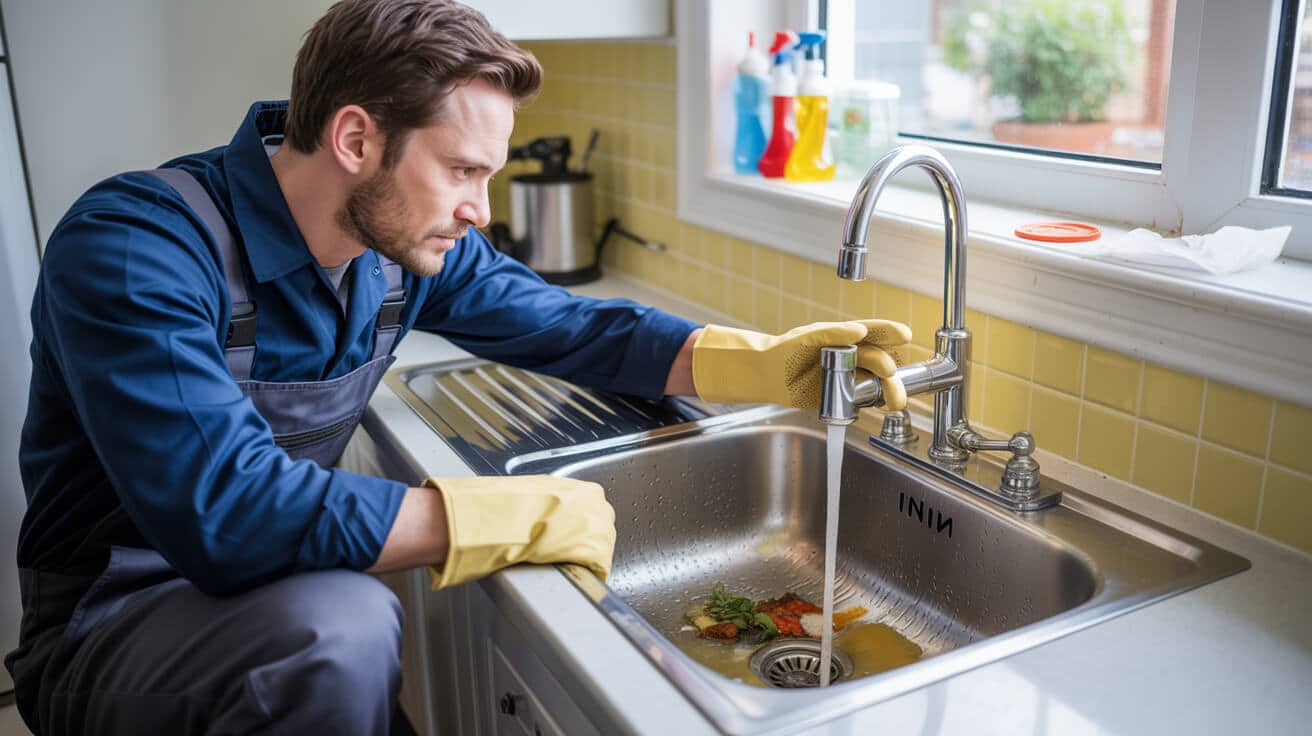
Most property-side disasters start with a cheap component and a slow drip, not a dramatic burst. Knowing what to watch (and upgrade first) means cheaper fixes and far fewer emergencies.
The Real Repeat-Offenders
- Taps & Shower Mixers: Cartridges and washers go first—water damage here often hides until rot sets in.
- WCs: Fill valves (modern dual-flush types) are a notorious source of silent overflows—run-on, ghost filling, or trickling cisterns always cost more than a speedy swap.
- Flexible Hoses: They start shiny, turn soft, and pose flooding risk if not replaced every five years. Many insurer horror stories start here.
- Waste Pipes: “Slow leak” at a trap is the culprit in damp floors, spongy cabinets, or patchy silicon. Attend at first sign.
- Hidden Joints and Fittings: Especially older stock—movement, variable mains pressure, or corner-cutting repairs make these the riskiest.
Always ask for WRAS-approved components and photo evidence—they’re not just technicalities but form the core of legal and insurance protection.
Seals, hoses, joints—these are the real quiz. Invisible failures pile up until they surface as five-figure bills.
Proactive replacements (especially for landlords, agents, and commercial managers) dodge blocked claims, emergency outlays, and bad reviews.
Direct vs Indirect Systems: What’s Their Impact on Hygiene, Pressure, and Repair?
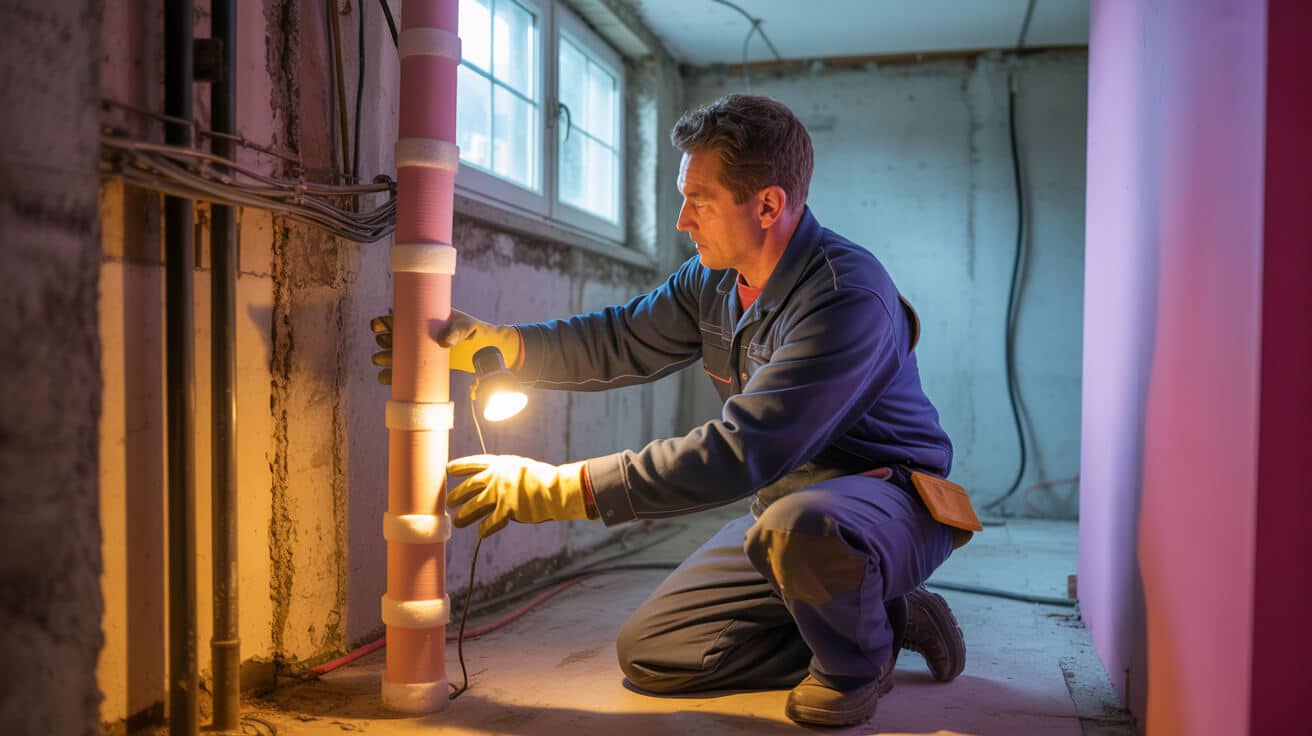
It’s not just plumbing nerd-speak—knowing which supply model you have defines how your water flows, how safe it is, and what can go wrong.
Direct Systems: Strengths and Weaknesses
- All outlets on mains: This means great pressure, hygiene (fresh water at every tap), but also—if the main shuts off, you lose all supply.
- Moderns builds usually direct: Direct is considered best-practice now for new developments.
Indirect (Gravity-Fed): Still Common—Unique Risks
- Tank in the loft: Feeds all outlets apart from the kitchen cold tap, which usually remains on mains for drinking water. Gives continuity if the main stops, but can breed issues.
- Contamination risk: Open or poorly lagged/cleaned tanks are open invitations for bacteria, insects, or even rodents.
- Maintenance: Tidy, tight-fitting lids and regular inspections keep tanks safe and legal. Unhygienic tanks are frequent deal-killers for rental and managed units ([Thames Water, 2024](https://www.thameswater.co.uk/help/water-quality/hardness-and-taste)).
Knowing your system means knowing where to check first when a problem arises and what to discuss when planning upgrades or certifications.
A tank with a solid lid and clear log beats a dozen repairs in panic. Hygiene and compliance always start at the top.
What Is Best Practice Maintenance—And How Can You Stay Legal, Efficient, and Audit-Ready?

The secret to a long-lived, compliant plumbing system isn’t in expensive parts but regular, visible care and records. Modern property managers, landlords, and switched-on homeowners win by being two steps ahead.
The New Gold Standard for Plumbing Care
- Label every isolation valve: and test them seasonally.
- Photo-log every entry and hot/cold riser point: —share with engineers and attach to insurance or management portals.
- Monthly checks for leaks, scaling, or weird odours: —spotting issues early means dirt-cheap repairs.
- Flexible hoses—replace before failure, always at five years.:
- Store certificates and service proof: —WRAS, G3, CP12, and manufacturer or job receipts; these are tickets to smooth claims.
- Service log—track every visit, upgrade, and fix: . Modern digital logs make this easy.
- Annual system walkaround: —especially before winter, so no surprises underground, in voids, or in hard-to-reach tanks.
Letting agents and larger landlords increasingly demand (and sometimes provide) digital record tools for properties; this isn’t “optional best practice”, but fast becoming an industry norm for any dispute or audit (Checkatrade, 2024).
When you have the records, every repair becomes routine—not a fight.
A system that’s checked, tagged, and documented is cheaper, easier, and more resilient. And it outpaces changing regulation and insurance queries—every time.
Why Plumbers 4U Is The Safest, Most Transparent Route to Plumbing Confidence
Any property, from a two-up-two-down through to a high-street shop, needs plumbing that’s visible, reliable, and built to win at audit time—not at defending hidden faults. Plumbers 4U puts clarity, legal documentation, and regulation-aligned fixes at its core.
Your Smartest Move: A Plumbing Partner that Covers Compliance and Tells You How
- WRAS & WaterSafe Certification: Every fitting, every job checked and compliant—fit for any letting agent, insurer, or auditor’s review.
- G3 Approval: The right cards for unvented cylinder instals and service—work that is safe, legal, efficient, and signed off.
- No Upselling. No Waffle.: You get a stepwise explanation at every visit, photo documentation for everything fitted or improved, and honest recommendations.
- Digital, Transparent Records: Every job (from leak repair to full instal) leaves a trace—photos, labelled valves, and ready-to-upload logs.
Clients—owners, landlords, or managing agents—report dramatic reductions in dispute time, smoother insurance claims, and all-round fewer headaches when switching to this approach. In many cases, documented proof and clear handover have cut repair costs and downtime in half.
The measure of a good job? You know exactly what’s been done, why, and how to explain it—no hidden extras, ever.
All it takes is one missed certificate, one invisible leak, or one failed valve to upend a tenancy or sale. Put your property—and reputation—in the hands of system-respecters, not wing-it trades.
Book Plumbers 4U for Stepwise, Record-Ready Plumbing
Your property deserves more than “it seems okay”—it deserves a clear-eyed plumbing partner. With Plumbers 4U, you get timely, courteous, and fully certified engineers who don’t just fix; they explain, document, and future-proof every system they touch. Every valve, hose, and tank gets its due, logged with photo evidence and digital clarity.
Whether you’re buying, letting, auditing, or just want peace of mind, invest in work that’s tidy, compliant, and always ready for inspection.
Ready for more than luck? Get a property that’s mapped, logged, and labelled for success—call Plumbers 4U now for a survey, repair, or a clear, compliance-first system check.
Frequently Asked Questions
What practical upgrades make today’s plumbing systems your best defence against unexpected damage?
Modern plumbing systems are engineered with resilience and risk prevention in mind, turning once-vulnerable properties into robust environments safeguarded from disruption. Features such as clearly labelled isolation valves at every fixture, pressure reducers to absorb shocks from utility surges, and WRAS-approved backflow protectors work together to prevent leaks, contamination, and burst incidents from turning minor problems into insurance nightmares. Where older systems relied on luck and inaccessible pipe runs, today’s installations allow for branch-by-branch shutdowns, meaning a single faulty tap doesn’t cripple your entire home or business.
New industry data shows that properties fitted with annual valve-exercise protocols recover twice as quickly from supply failures. Moreover, when every shut-off and safety device is mapped and photo-logged, routine repairs and compliance checks proceed with minimum frustration—often demanded in landlord and block manager risk assessments. For commercial and high-value residential clients, upgraded schematic documentation and digitally tagged assets are quickly becoming the standard for securing favourable insurance terms.
A modern, well-labelled system isn’t just insurance compliance — it’s permission to sleep easy, never fearing missed leaks or water chaos.
Which upgrades boost day-to-day protection?
- Remote isolation technology: Allows immediate mains control via app or physical switch.
- Labelled local valves: Every appliance or bathroom gets its own shut-off, minimising collateral impact.
- Pressure management: Smart gauges with alerts for unexpected pressure drops.
- Certified fittings: Only WRAS or WaterSafe products at critical junctions.
- System mapping: Digital photo logs and plumbing “passports” for easy handover and faster troubleshooting.
Book Plumbers 4U for a comprehensive system audit and see where simple retrofits can drastically lower your risk and simplify maintenance.
Why does knowing the full structure of your water system yield crucial leverage for owners and managers?
Understanding the architecture of your property’s water delivery system goes far beyond satisfying technical curiosity—it directly impacts your ability to upgrade appliances, respond to emergencies, and negotiate with contractors. UK homes and commercial premises differ widely: some operate with direct mains-fed cold supplies, while others use loft storage tanks or intricate multiple-cylinder hot water layouts. Each setup brings specific rules—such as routine lid and lagging checks for tanks, or annual G3 safety certification for unvented cylinders.
For owners managing lettings, knowing the lineage and compliance status of every pipe, valve, and cylinder streamlines everything from emergency callouts to routine upgrades. Recent industry surveys highlight that property professionals who can fluently describe their system—with supporting documentation—achieve 30% faster resolution of breakdowns and enjoy more bargaining power on maintenance contracts.
Every valve you can identify, every pipe you can trace, is another hour of disruption saved and another inch of negotiating leverage gained.
How does system literacy empower smarter decisions?
- Enables rapid isolation and repair, reducing damage in an emergency.
- Informs appliance selection—choosing only what your system will support safely and efficiently.
- Encourages proactive compliance, so you never get caught out at audit or sale.
Plumbers 4U’s engineers provide hands-on walkthroughs, schematic mapping, and maintenance training, empowering you to be proactive rather than reactive.
Where can hidden main shut-offs cause costly flooding — and how do you guarantee control in a crisis?
Your property’s main stopcock is the ultimate line of defence against an expensive water loss event, yet it’s still routinely boxed in, painted over, or awkwardly concealed behind fitted furniture. No property is immune: in flats and commercial buildings the shut-off may be buried in a riser, shared utility bay, or locked service cupboard. The result? Delays in shutting off the water, and damages that escalate with every passing second.
Recent loss adjuster reports show that over 60% of major domestic water claims involve a struggle to locate or operate a main shut-off, often compounded by lack of labelling or access permissions. Fast action spells the difference between a ruined carpet and a multi-room refit—especially important for landlords, facility managers, or anyone liable under the Landlord and Tenant Act to control hazards immediately.
A labelled, regularly tested stopcock can save you thousands, a tenancy, or even a legal headache — all for the cost of fifteen minutes’ attention.
What practical steps ensure you’re always in control?
- Photograph and label the main and any branch shut-offs—print or log digitally, and share with all parties.
- Instal tool-free isolation points that anyone can operate in a hurry.
- Review access in shared and commercial buildings, coordinating with management or neighbours if needed.
Schedule a system mapping and readiness check from Plumbers 4U—online, by phone, or before your next tenancy or property inspection.
Which early warning signs give you time to intervene before plumbing failures turn critical?
Most catastrophic water losses, leaks, or compliance breaches begin as barely noticeable cues—soft hisses, slow metre ticks, musty smells, or new condensation where none existed before. Professional asset managers and conscientious homeowners develop an “early sense” for these clues, catching issues before they spiral. Metre readings that rise in a quiet house, faint sounds behind walls, or even subtle paint rippling point to “invisible” leaks. New tastes in cold water or “humming” from valves often spell the start of backflow, air ingress, or failing mechanicals.
Research presented at the latest Water Industry Modelling conference showed that routine self-checks catch 70% of leak sources before they breach insurance excess thresholds. letting agents who implement monthly “walk, touch, and listen” protocols with tenants reduce callouts and related disputes dramatically.
Sometimes, the softest noise or lightest damp patch is your property’s way of waving a warning flag—catch it early and you’ve solved nine-tenths of the problem.
Which simple checks reliably expose brewing problems?
- Run taps and outlets, listening for hammer, air, or surging.
- Touch for cold patches behind appliances or exposed pipes.
- Inspect unvented cylinders, cisterns, and tank insulation for signs of weeping or rust.
Take these steps monthly, or engage Plumbers 4U to train your team or tenants—professional prevention always beats repair.
How does systematic plumbing knowledge shift your stance from reactive panic to proactive asset leadership?
When you understand your water system’s schematic, compliance calendar, and storage logic, your conversations with trades, insurers, and auditors change. Instead of waiting for a callout to tell you what’s gone wrong, you drive the process: marking urgent repairs, scheduling compliance audits, and choosing upgrades that hit measurable payback targets like EPC uplift or energy savings.
Professional landlords, facility managers, and even first-time owners who maintain annotated flow diagrams, digital logs, and labelled valves leverage these to fast-track appointments, negotiate costs, and assure tenants or buyers. Industry figures show that properties with documented, up-to-date schematics get preferred response from major insurers and maintenance contractors, slashing downtime and reducing premiums.
Control isn’t just in pipes and valves — it’s in the knowledge you wield, the data you store, and the standards you hold your property and your team to.
What are the go-to best practices of high-performing owners and managers?
- Archive visual documentation of all maintenance and repair work.
- Schedule annual system audits and compliance check-ins before renewal deadlines.
- Partner exclusively with certified engineers (WRAS, G3, EPC) whose work leaves a clear maintenance trail.
Plumbers 4U can produce the digital plumbing passport you need, closing compliance gaps and strengthening your credibility as a modern property leader.
What are the easiest, compliance-friendly habits to ensure long-term reliability and legal protection for your water system?
Lengthening your system’s life, avoiding fines, and protecting insurance all come down to a handful of user-safe routines. System labelling, monthly flow-tests, and swift replacement of “consumable” parts (like washing machine hoses or tap cartridges) head off over 50% of avoidable repairs. Never ignore minor cold patches, green crusts on joints, or unexplained drops in flow — these “red flags” often mask leaks or corrosion that, left unchecked, will breach compliance and insurance requirements fast.
Crucially, lay observers should resist “DIY heroics” on stuck valves, leaking joints, or electrics-involved faults — those are where unqualified action leads to voided warranties or costly upgrades. Prompt, photo-handled communication with a certified engineer makes for an audit trail that insurers, risk assessors, and new tenants will trust.
Reliability is routine: log, label, test, and call the pros at the first sign of trouble — your future self (and your insurer) will thank you.
Which daily, monthly, and annual actions count most?
- Test and operate all isolation points at least twice annually.
- Log maintenance, repairs, and incidents (photo+note) and share with occupiers or management teams.
- Swap ageing or unapproved hoses, and keep evidence of WRAS certificates and engineer qualifications.
Book Plumbers 4U’s WRAS- and G3-certified team to map, test, and future-proof your plumbing—so you always meet legal, safety, and asset protection expectations.
Plumbers 4U stands ready to protect your property—schedule a full system review, mapping, or code compliance visit now and unlock leadership-level control, safety, and peace of mind for every stakeholder.

